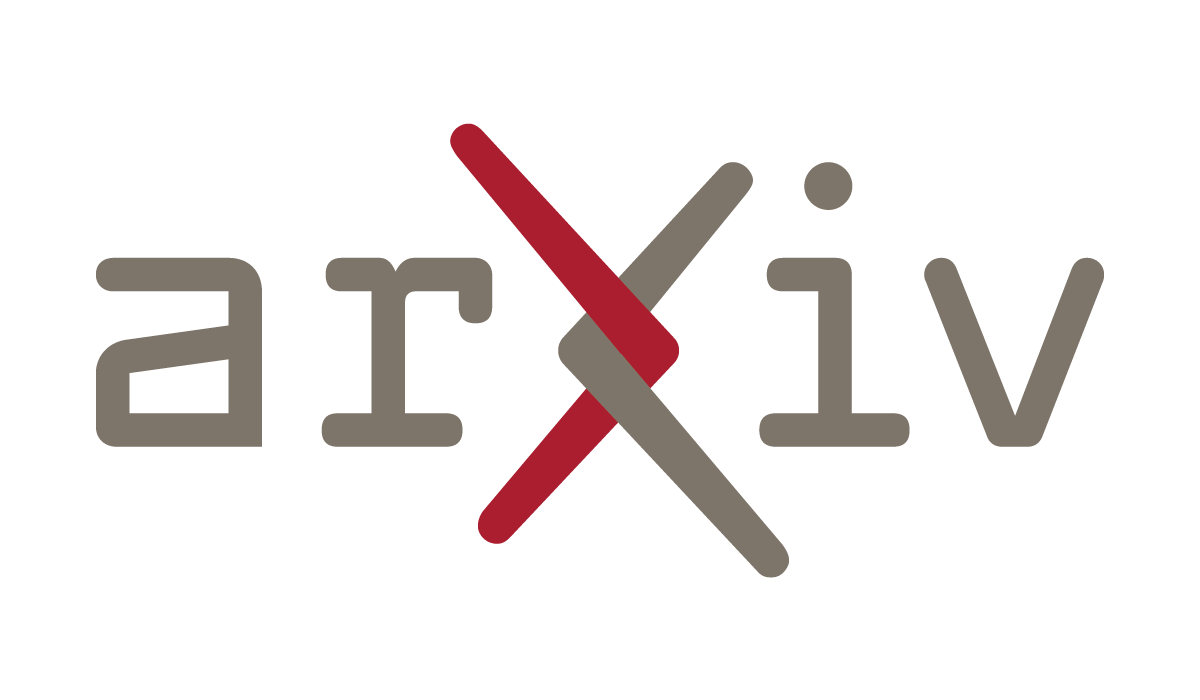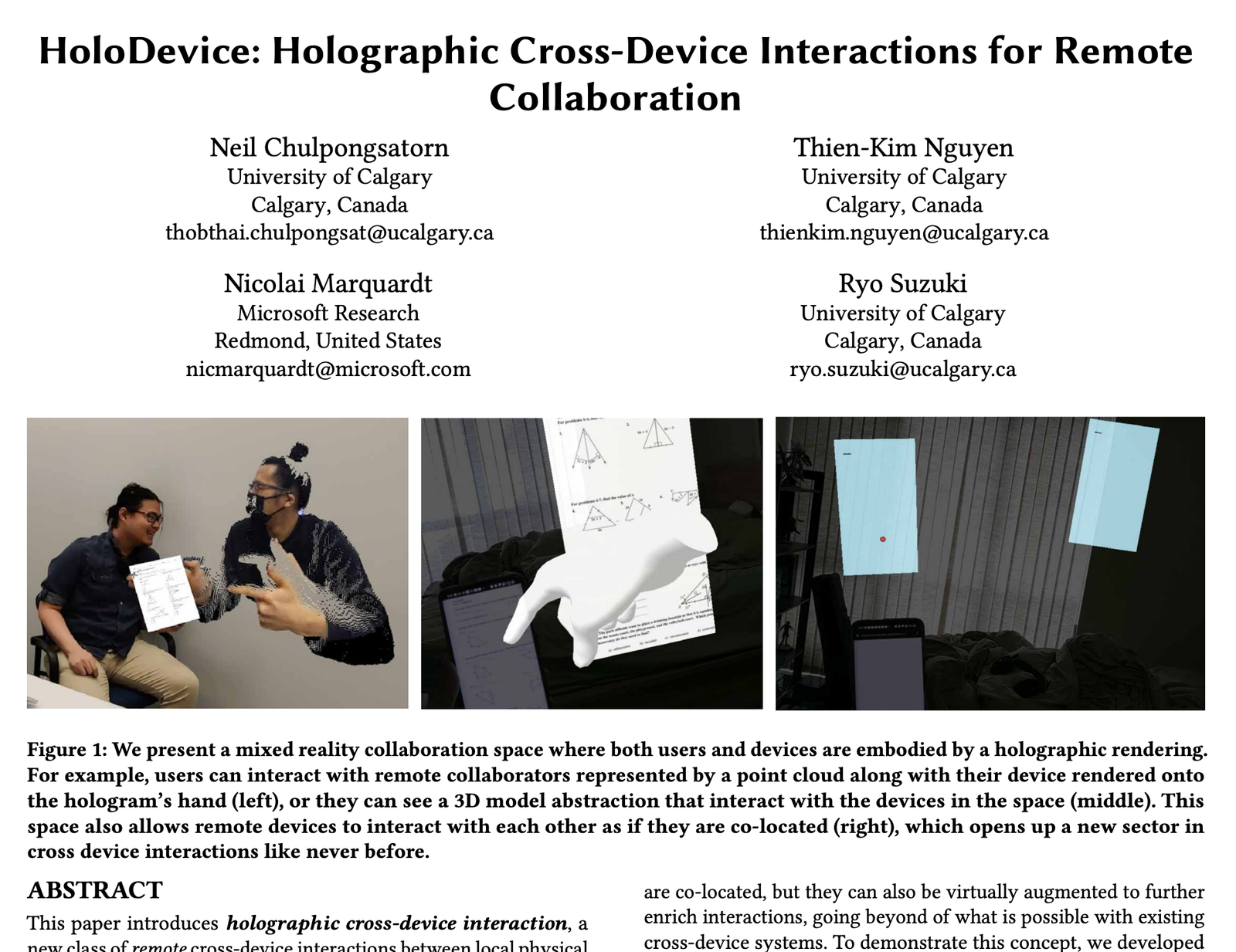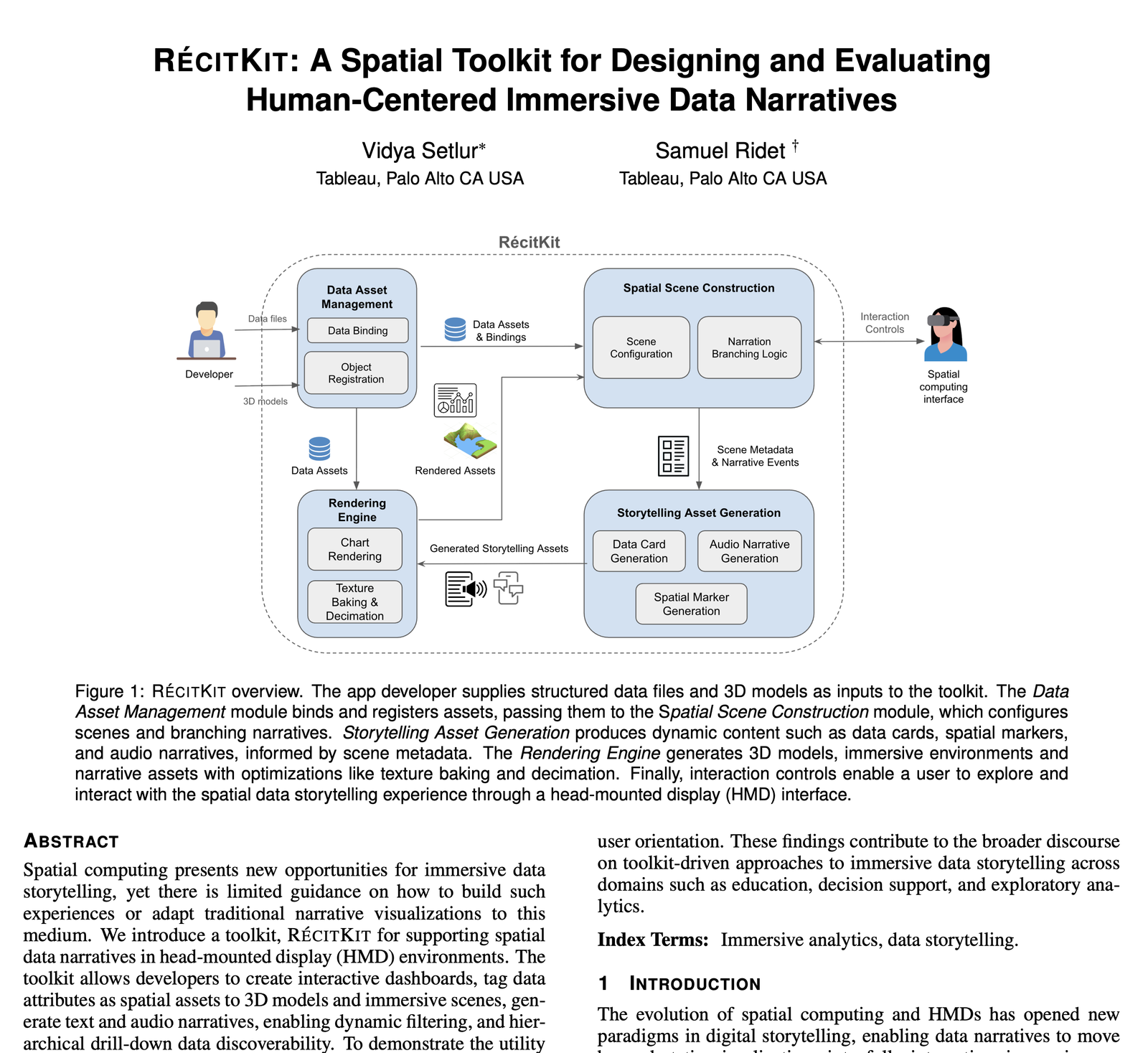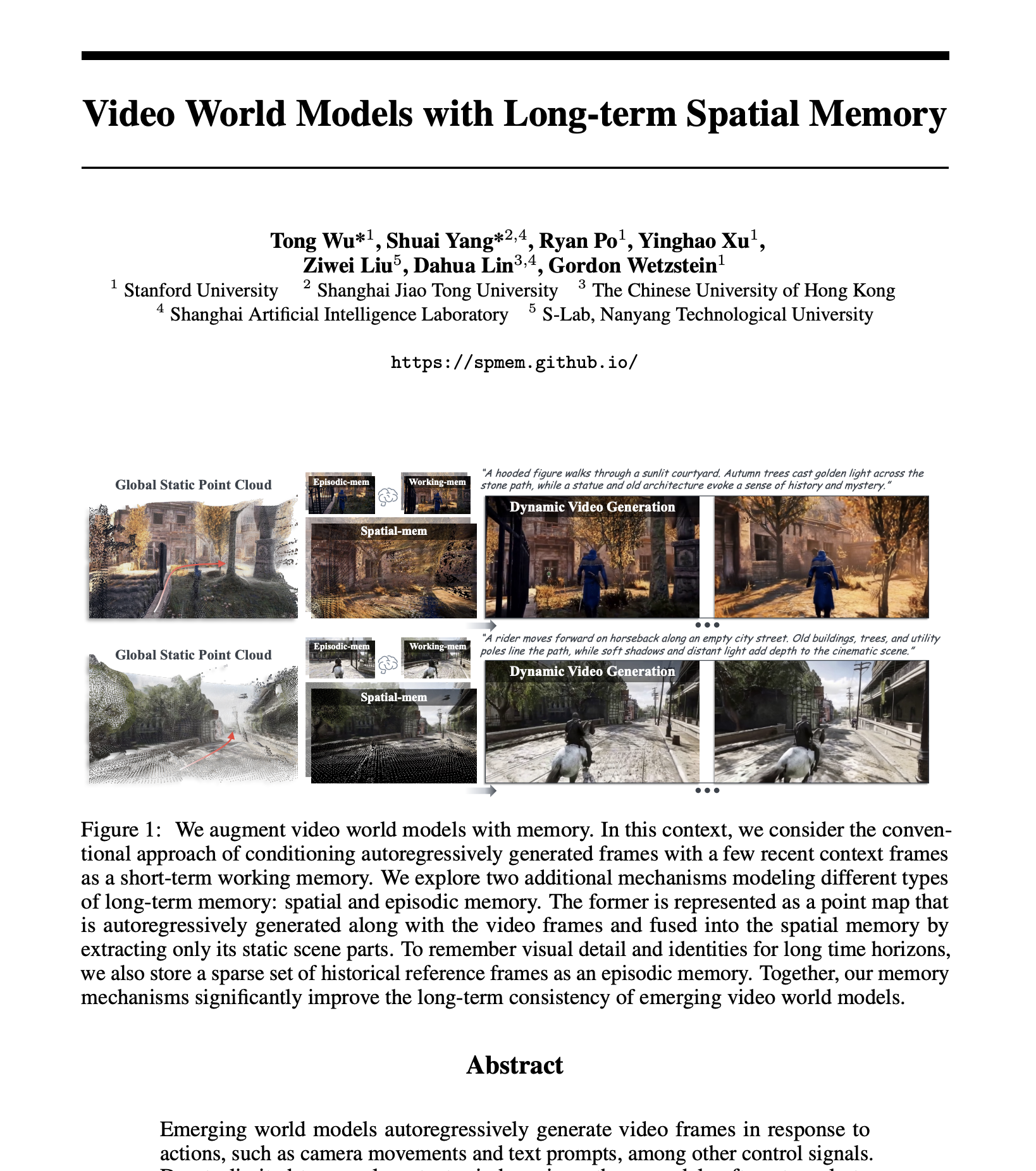🎯 Executive Summary
- Breakthrough – HoloDevice streams a live holographic twin of a remote device to Hololens 2, enabling touch & pen input as if co-located.
- Impact – Remote pair-programming, design reviews, hardware support.
- Players – Microsoft Teams, Zoom Spatial, Logitech.
🧠 ELI5
It’s FaceTime, but instead of grandma’s face, her iPad floats in front of you—press a button, she sees it click remotely.
HoloDevice: Holographic Cross-Device Interactions for Remote Collaboration
This paper introduces holographic cross-device interaction, a new class of remote cross-device interactions between local physical devices and holographically rendered remote devices. Cross-device interactions have enabled a rich set of interactions with device ecologies. Most existing research focuses on co-located settings (meaning when users and devices are in the same physical space) to achieve these rich interactions and affordances. In contrast, holographic cross-device interaction allows remote interactions between devices at distant locations by providing a rich visual affordance through real-time holographic rendering of the device’s motion, content, and interactions on mixed reality head-mounted displays. This maintains the advantages of having a physical device, such as precise input through touch and pen interaction. Through holographic rendering, not only can remote devices interact as if they are co-located, but they can also be virtually augmented to further enrich interactions, going beyond what is possible with existing cross-device systems. To demonstrate this concept, we developed HoloDevice, a prototype system for holographic cross-device interaction using the Microsoft Hololens 2 augmented reality headset. Our contribution is threefold. First, we introduce the concept of holographic cross-device interaction. Second, we present a design space containing three unique benefits, which include: (1) spatial visualization of interaction and motion, (2) rich visual affordances for intermediate transition, and (3) dynamic and fluid configuration. Last we discuss a set of implementation demonstrations and use-case scenarios that further explore the space.

💼 Implications
- Field-service SaaS – first mover could tap $3 B support market.
- Hardware partners – requires device IMU & webcam hooks.
🎮 Widget
“HoloMirror” – click a stylus on virtual Surface, remote side sees ink appear.
📊 Investment Lens
- R&D: $8 M to robustify low-latency streaming.
- Risk: network jitter and privacy compliance.






